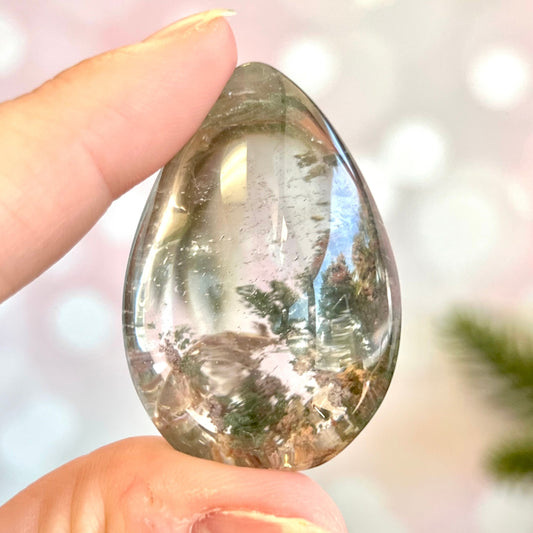Behind the many names of Lodolite
From a mineralogical standpoint, it’s Included or Inclusion Quartz. Pretty straightforward and descriptive, right? Inclusions happen when other materials get caught inside a crystal as it grows, encasing them inside. These materials can be solids like Chlorite, liquids such as water, and even gas.
All the other labels are trade names.
Trade Names
Trade names have two main purposes when it comes to crystals:
Perceived Value
Trade names can help market and sell crystals, often at a higher price. Some of them are misleading, and suggest a crystal is a different material. An example of this is African Turquoise. It’s not a Turquoise at all, but a type of (often dyed) Jasper.
Some trade names don’t mislabel the material, but make it sound nicer. Lavender Rose Quartz IS Rose Quartz. But it’s actually a lower grade version of this pink crystal. It wasn’t popular for that reason, until someone gave it a more flattering name.
Telling Crystals Apart
Geologists aren’t only concerned with the visual appearance of a rock when it comes to names. Scientific names for minerals are often descriptive of their composition. Two rocks can look very different from each other, and have the same name.
That’s where trade names shine. They help us identify and group crystals in a way that makes sense for the non-geologist.







